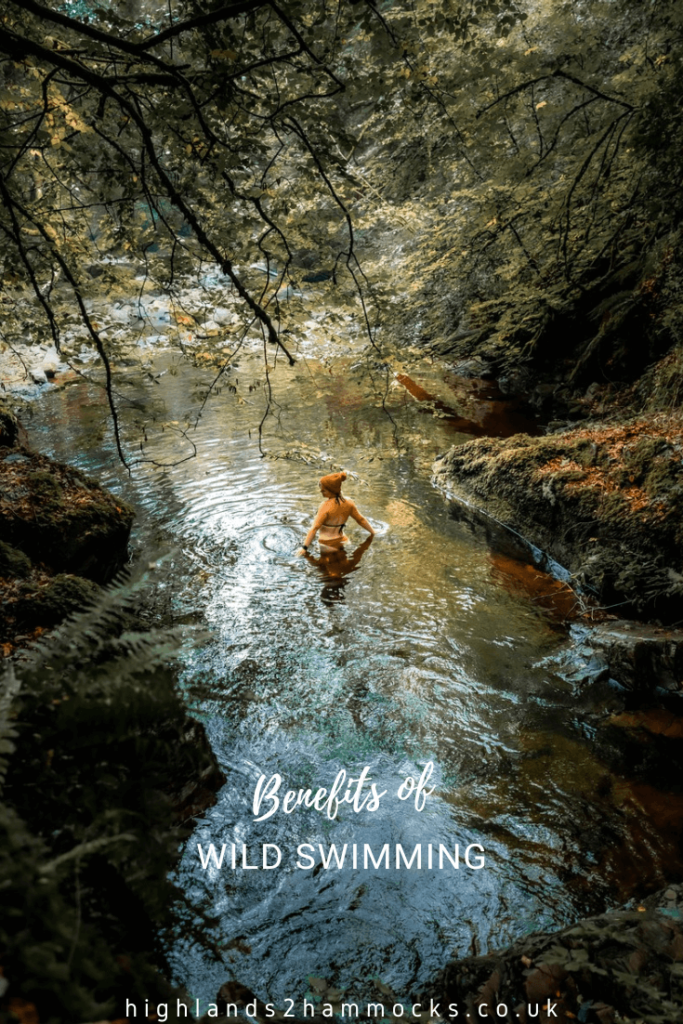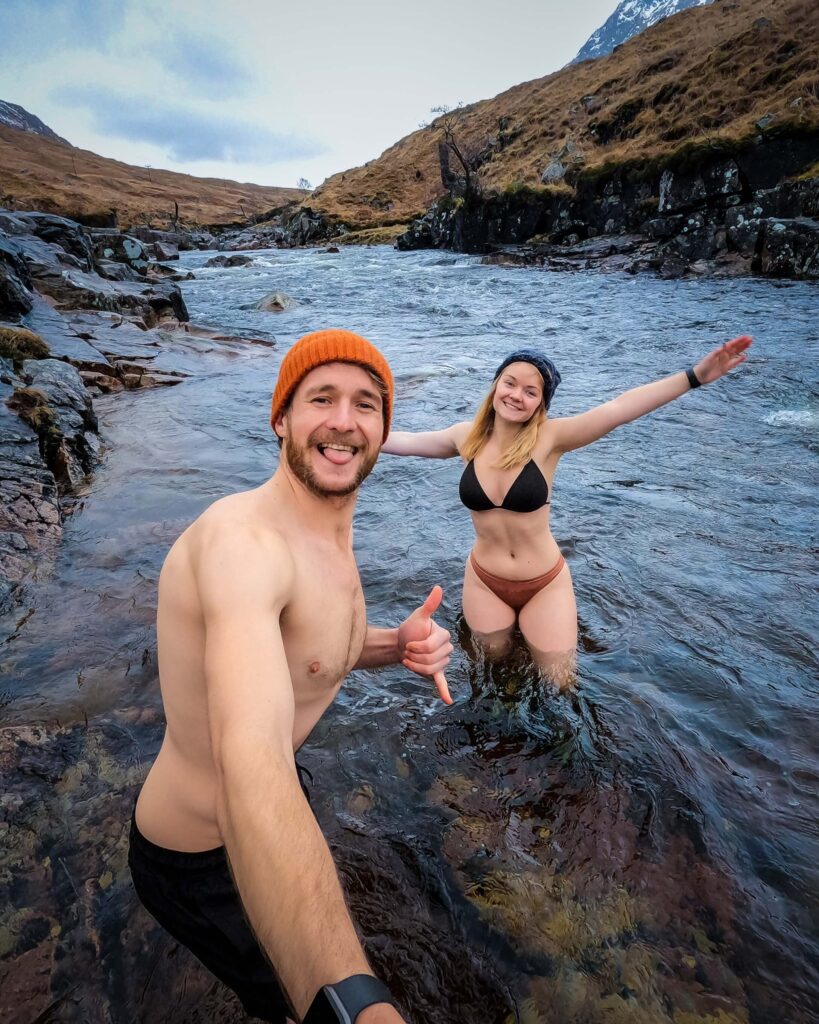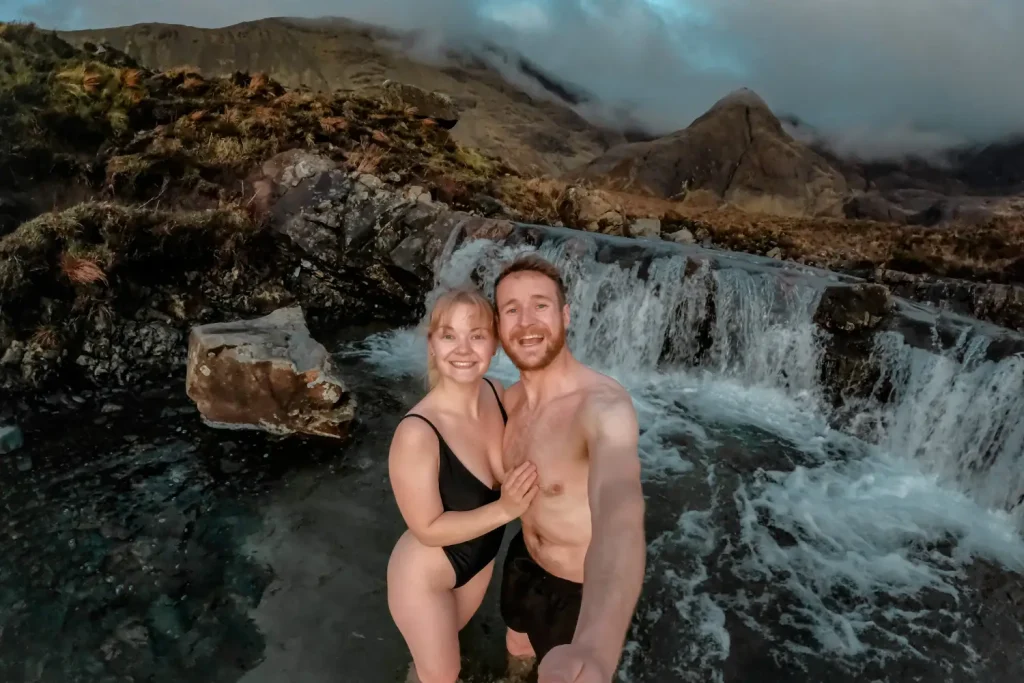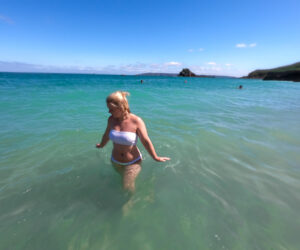Wild swimming is our favourite way to connect with nature and over the years, we have reaped the benefits in our physical and mental health from taking an icy cold dip.
Swimming outdoors in open water is becoming increasingly popular, with many enjoying the benefits that this hobby brings. However, it is important that we educate ourselves on how to go wild swimming safely.
No time to read now? No problem, save a pin to your Pinterest board for later!


We absolutely love a cold dip, however we have learned the importance of risk assessing the situation before getting into open water. It’s helpful to recognise that even the most confident of swimmers can get into trouble in unpredictable waters. We will go into more detail on the following topics.
Table of Contents

Health Benefits of Wild Swimming
Many people enjoy the health benefits of sea swimming, so why is going through the pain of acclimatising to the freezing cold water really worth it?
Listed below are just some of the believed health benefits that result from regular swims in cold water environments.
- Improve circulation
- Lowers stress levels
- Boosts immune system
- Increases libido
- Natural high
- Better sleep
- Increased happiness
- Prevents and manages long term health conditions

How to Stay Safe Whilst Wild Swimming
- Don’t swim alone, especially if you are new to wild swimming. Alternatively, make someone aware of your location.
- Check the weather conditions before you go swimming. Look at the winds and temperature as well as the tide times.
- Ifyou are new to cold water, it is advisable to wear a wetsuit. Swimming gloves and booties also help to keep you warm.
- Acclimatising to cold water takes time, build up to it and control your breathing.
- If you have a heart condition, enter cold water slowly.
- Don’t start swimming until you have your breathing under control, when the water is cold (under 15degrees c) you will begin to hyperventilate.
- Even strong swimmers will lose power and strength in cold water due to reduced blood flow to the arms and legs.
- Swim close to the shore
- Be aware of rips and don’t try to swim against them, swim out the side of a rip. If you are swimming in an area with lifeguards, swim in between the red and yellow flags and avoid swimming where the red flags are.
- Keep an eye on how long you have been in the water
- Be responsible for your own safety

Tips for Staying Warm After Wild Swimming
Swimming in summer is completely different to swimming throughout the winter months. When it is warm, you can come out of the sea and the sun will quickly dry you off. In winter it can be very dangerous and hypothermia is a huge risk.
When you first get out the water, you might not think you are actually that cold. However it is still important that you get dry and warm as quickly as possible.
It is a good idea to find a sheltered area, out of the wind for getting dressed and we would advise you to have warm clothes to put on after. If you have a dryrobe or an overhead towel then this will help to keep you warm whilst you get dressed.
Wear clothes that are quick and easy to get on after and wrap them up in a hot water bottle. You may start to get increasingly shivery after coming out the water as your core temperature drops.
We bring hot water bottles with us to keep warm as well as a flask with a hot drink. Wait until your core temperature has risen again before taking a hot shower or bath.
We would highly recommend getting yourself one of these Seashell dry robes to keep yourself warm after getting out of the water.

So there you have it, some tips for staying safe whilst wild swimming. Have you been wild swimming before? Let us know in the comments below.
Don’t forget that sharing is caring! Be sure to share this article with your family and friends who enjoy wild swimming to make sure they are aware of how to stay safe in the water. Catch up with us on social media and tag us in your wild swimming adventures.
Read Now:
- Unmissable NC500 Wild Swimming Spots – The Best Beaches for Swimming on the NC500
- 11 Best Places to go Wild Swimming on the Isle of Skye
- Wild Swimming in Aberdeenshire – Top Spots on the NE250
This article may contain affiliate links that provide us with a small income. For more information read our Affiliate page.
Save this image to your Pinterest Board for later!




